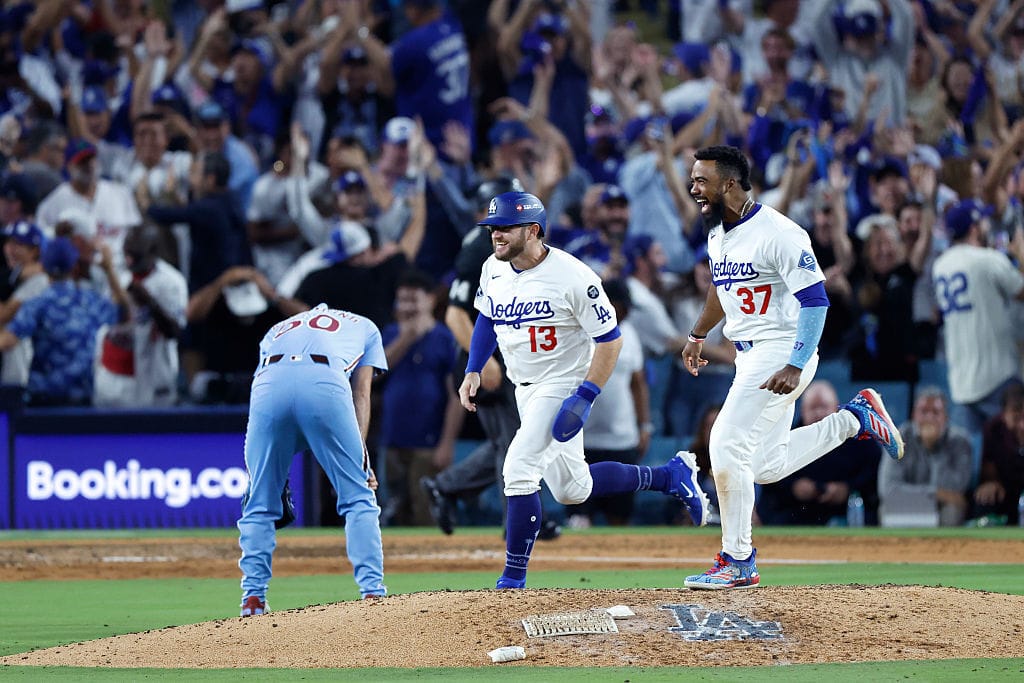On November 19, 1976, the Cleveland Indians made national news — a rare thing for that team in those days — when they signed Baltimore’s 20-game winner Wayne Garland as a free agent for the extraordinary sum of $2.3 million. Yes, it was $2.3 million over 10 years, but that was still front-page news in 1976. Garland had made just $23,000 in 1975.
“My father-in-law said I wasn’t worth that much,” Garland would say.
It didn’t work out. Garland pitched way too many innings in 1977 — Cleveland was going to get its money’s worth! — and led the league with 19 losses. Then came the arm injuries. He was released after the 1981 season, even though he had five years left on his deal, and he never pitched in the big leagues again.
I bring this up today because for a decade or more after Wayne Garland retired, he became a symbol of Cleveland baseball failure. That wasn’t fair to him, no, but as Roy Hobbs says in The Natural, “Some mistakes, I guess, we never stop paying for.” That’s a huge theme in sports. If you trade for the wrong quarterback, draft Sam Bowie over Michael Jordan, deal Frank Robinson for Milt Pappas, it will haunt you. It’s SUPPOSED to haunt you for a long time.
Thursday’s Philadelphia heartbreak begins with the Los Angeles Dodgers being so rich that their mistakes don’t haunt them at all.
This offseason, the Dodgers spent a tidy sum of money to ensure they had the best bullpen in baseball. They gave $72 million — thirty-six times what Cleveland paid Wayne Garland in 1976 — to bring over lefty super reliever Tanner Scott. In the previous two seasons, Scott had pitched a total of 150 innings, and the league hit .186 and slugged .254 against him.
They also gave $13 million to Kirby Yates, who was so good for the Texas Rangers in 2024 — 1.17 ERA, 33 saves, 0.827 WHIP — that he got Cy Young votes.
And being the Dodgers — with their endless supply of cash — they also gave Blake Treinen $22 million to return and give them some more of what he offered in 2024 (1.93 ERA, 0.943 WHIP, unrelenting in the postseason).
They were all set with a first-class bullpen to go along with all their other luxuries.
But then, they all collapsed—all three of them. Scott, Yates, and Treinen didn’t sort of collapse — they fully crumbled, pitched so badly that the Dodgers, with their endless supply of riches, had to fight all the way to the finish line just to make the playoffs. The Dodgers were suddenly a Lamborghini without its two front tires.
Having $100 million of relief pitching go sour should be crushing to a team.
But, alas, these are the Los Angeles Dodgers — so wealthy, so loaded, so stocked with backup plans — and here’s what they did: They reached into their Mary Poppins bag of unlimited treasures and pulled out Rōki Sasaki, the game’s best starting pitching prospect before he got hurt.
“I think that everyone believes he can definitely be the best pitcher on the planet,” Mookie Betts said of Sasaki before the season began.
The Dodgers said to Rōki, “Hey, you can pitch the late innings, right?”
And he said something in Japanese that must have been, “Sure, why not?”
Thursday, with the score tied 1-1 in the eighth, Sasaki came in. He pitched three perfect innings, and at no point did the Phillies have any hope whatsoever of scoring. He was, indeed, the best pitcher on the planet.
“He’s going to pitch until they get a run, and we’re never going to score while he’s pitching,” my pal Linda texted during the wipeout innings. “It’s math.”
Yes. It is math. In a right baseball triangle, the square of the Dodgers’ payroll plus the square of their baseball acumen equals enough to overcome any disaster.
It’s the Pydodgerian Theorem.
Heartbreak was coming for the Philadelphia Phillies one way or another.
Never before in baseball history has an error ended a postseason series. People tend to forget that the ball going through Bill Buckner’s legs happened in Game 6 of the World Series, not Game 7. Fred Snodgrass’ infamous dropped fly ball in the 1912 World Series did not end the game (it didn’t even tie the game). Mickey Owen’s third-strike passed ball started a rally, but didn’t end the game or the series. Tony Fernandez botching a double play grounder in the 1997 World Series led to the winning run, but didn’t score it. Mariano Rivera’s error in the 2001 World Series led to Luis Gonzalez’s walkoff hit.
Babe Ruth got thrown out stealing to end the 1926 World Series, but that’s not the same thing.
The point is, an error had never ended the game. Until now.
And I don’t think any of us, not even the most cynical Phillies fan, saw it coming. This was the bottom of the 11th inning. In the top of the inning, the Phillies — finally facing someone who wasn’t Rōki Sasaki — managed to get a runner to second base. It was their first runner in scoring position in a long while. Harrison Bader was at the plate facing Los Angeles’ Alex Vesia.
The two battled for nine pitches with Bader fouling off pitch after pitch out of the strike zone. There’s a longstanding and powerful belief across MLB that the longer the batter can keep an at-bat going, the better chance he has of doing some damage. I doubt it’s true — Tango ran some numbers for me, and it seems like full count at-bats are pretty much all created equally, no matter how many pitches are thrown — but it seems logical enough. And it did seem like Bader was getting the measure of Vesia.
Then he struck out on a pitch that was low and about a foot outside the strike zone.
As Kurt Vonnegut wrote: So it goes.
The Dodgers put together their own mini-rally. With one out, Tommy Edman singled. After the second out, Max Muncy punched a single past a diving Trea Turner to put runners on first and third. In came Vonnegut character Orion Kerkering, who walked Kiké Hernandez with first base open.
That brought up Andy Pages. If Orion Kerkering is a Vonnegut character, Andy Pages is Bazooka Joe’s friend in the bubble gum comic. Andy Pages is the one who asks Bazooka Joe why he threw the clock out the window.
Kerkering got Pages on a check swing for strike one and while, yes, I need to get to the heartbreak already, I am going to pause here to say that after watching a bajillion hours of playoff baseball I am now convinced that the first thing I would do as baseball commissioner*, the very first thing, would be to change the check swing rule. I mean, I would do this TOMORROW.
*We had a fantastic conversation with Jane Leavy about her book Make Me Commissioner earlier this week — it will be up on the PosCast next week, but if you want to see it now, it’s up on our YouTube Channel.
My rule would be, very simply, that for a check swing to be a strike, a batter would have to go halfway around — that is to say, his bat would have to cross the line to the pitcher’s mound. I can give you 500 reasons for this, and at some point in the near future I will, but suffice it for now to say that these pitchers with their ungodly stuff are getting way, way, way too many cheap strikes where the batters barely offer at a pitch that spins out of the zone. There were probably five or 10 pitches on Thursday alone where the batter just flinched, nothing more, and it was a checked-swing strike. That’s not how it used to be, and it’s not how it should be. The pitchers already get too many advantages. You want to get more balls in play? You want more offense? Change the checked-swing rule now.
OK, I’ll get more into that later. Where were we?
Oh yeah, Orion Kerkering (“So it goes”) had a 0-1 count against Andy Pages (“Because I wanted to see time fly,” Bazooka Joe said), and then Pages hit a broken bat dribbler back to the mound.
Here’s one difference between being a fan and being a player — as a fan, you see everything clearly. It’s all in front of you. That’s by design: You paid for the ticket, you paid for the big screen TV, you paid for the right to think it’s all easy. We get to sit back, relax, and take it all in. So from our perspective, the ball bounced up to Kerkering, who merely had to catch it and throw to any base for the inning-ending out. Nothing to it.
This was not how it looked to Orion Kerkering, however.
No, see, Orion Kerkering had just thrown an evil 96-mph sinker on the hands. He watched Pages swing and undoubtedly heard the bat break. Then he saw the ball coming toward him. He had, by my rough stopwatch account, .257 seconds to react to the baseball coming his way. He could not come up with it cleanly; it bounced off his foot.
From our couch perspective, Kerkering still had time to get the ball and get an out at any base. The obvious place to go was first base, as Pages had gotten a poor start out of the box — that tends to happen when you break your bat on the swing.
But that’s not how it looked to Orion Kerkering. I can’t say exactly HOW it looked to him, but I imagine that his brain was popping fuses and sputtering out garble, as it would for most of us. The ball was just there, loose, and the winning run was sprinting home, and whatever choice he made in the next one second would be remembered FOREVER.
He picked up the ball and, even though his catcher, J.T. Realmuto, was clearly (and quite calmly, considering the moment) pointing to first base, Kerkering calculated that the throw home was quicker. His calculator, alas, was broken because if his throw had been perfect, it would have been way too late to get the runner. But his throw was not perfect; it went all the way to the backstop — giving the scene a tragic visual that will cut through Philadelphia fans every time it is shown on replay for the next 100 years.
“It breaks your heart,” Bart Giamatti famously said about baseball. “It is designed to break your heart.” I love that quote, but I’ve never really believed it. Yes, baseball will break your heart — Philadelphia is heartbroken today, just as New York was heartbroken yesterday, just as Detroit or Seattle will have its heart broken tonight, just as Cleveland has had its heart broken every single year of my entire life.
But that’s not the design.
No, baseball is designed to give you hope.
Spring training will come again.
This post is free for everyone — made possible by the Brilliant Readers in the Clubhouse. Want to be a part of the Club? You can join here.

